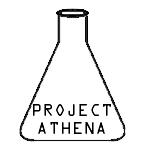
High School
It’s hard for anyone to believe that 10 high school students would be willing to go to school on a Sunday and spend six hours preparing for a large project. It’s even harder to believe that eight more would come in on a Friday they have off from school to spend four more hours ironing out logistics for the same project.
But this is a reality for students in Harrisonburg High School’s Governor’s STEM Academy.
“There’s some ... commitment,” said Andy Jackson, co-director of and physics teacher in HHS’s STEM Academy, on his students’ involvement in one of their many hands-on projects.
In its third year, HHS’s program is one of 22 science, technology, engineering and math (STEM) academies in Virginia. However, it is one of two academies serving a single high school.
Since STEM education places a high focus on integrative learning, the faculty at HHS aims to foster this approach in addition to general interest in STEM fields.
“[By] trying to make sure that our classes are engaging and not drive kids away from [STEM] and making them interesting and encouraging … at the high school level, that’s what we do,” Jackson said.
There are two pathways within the academy. According to Jackson, the Mathematics and Science track is more flexible in terms of scheduling as it allows students to choose from a wide range of math and science courses.
However, the Engineering and Technology track follows a more structured four-year plan; students on this pathway will remain in most of the core classes together as they move up through curriculum designed to promote integrative learning.
The current group of freshman set to take on the Engineering and Technology track is made up of 21 students, five of whom are girls. As freshmen they are required to take algebra II, physics, an intro to engineering course and a special STEM Academy English class, all together.
As they tackle reading “Rocket Boys” by Homer Hickam in English, the freshmen are also focusing on a unit on rocket science in physics, as well as participating in an academy-wide rocket building and launching competition.
Sophomore students take biology, engineering and yet another STEM Academy English class together. But in their English course, they’re reading “The Jungle” by Upton Sinclair, which exposes unsanitary practices in the meat-packing industry in Chicago during the early 1900s. The novel ties in with the students’ biology field trips to Our Community Place and various local farms, where they get to experience today’s industry firsthand. In turn, their work in both classes overlaps into a year-long engineering project on the topic of food sustainability.
But at the junior level, students are prepared to take on even bigger projects.
The StratoStar weather balloon launch project was initiated this year as a way to integrate the geoscience and chemistry courses that Engineering and Technology students are required to take during their junior year.
Students spent about a month working on and off in class to design an experiment for the StratoStar, a high-atmosphere research balloon attached to a parachute and equipped with four high-definition cameras. It’s designed to travel through the different layers of the atmosphere, about 100,000 feet up, until it gets to the point where the atmosphere stops and space begins. Once it gets there, the balloon pops under the extreme temperature and pressure changes.The juniors were interested in how the intensity of sound changed as the balloon rose higher and higher into the atmosphere.
But this was an advanced, organized project. There were multiple teams, and each one had specific tasks. The launch preparation group was in charge of determining the landing site for the balloon and was tasked with documenting the events on launch day. Meanwhile, the payload box team and launch team had more duties that came into play on the day of the launch as they were responsible for attaching equipment to the balloon and parachute.
Geoscience teacher Christina Welsh is in her first year teaching in the STEM Academy. The StratoStar experiment provided an overlap for her meteorology unit and the students’ corresponding chemistry unit on gas laws with Welsh’s colleague and chemistry teacher, Kasey Hovermale.
Her group of 14 students, the smallest group in the Engineering and Technology pathway, was the first batch of freshmen in the academy. They have been together for about two-and-a-half years now and will be part of the program’s first graduating class.
But of these 14 young scientists, only four are girls.
Jessica, Latekah (“Tekah” to her classmates), Lauren and Zahraa (apparently the release form all STEM students had signed protects them from having their last names printed? so I didn’t include those) have been on the Engineering and Technology track since they were freshmen. Together, they have endured the immaturity and playful taunting that inevitably comes with a room full of high-school boys.
“They agitate me ... all of us, actually. But I’m usually the one to keep them in check because I have a short temper,” boasted Lauren, a red-headed student on the launch preparation team for the StratoStar project.
But Welsh noted that the girls, although they are perfectly capable and intelligent workers, have a tendency to segregate themselves during class, as they sit in the back right corner of the classroom. Welsh noticed this even more so as the class began preparations for the StratoStar launch project.
Although all four girls were on the launch preparation team, Welsh said they often hung back and allowed their male peers to take over during much of the process.
“I think it just goes back to ... that general mindset of, well, ‘If the guys are gonna do it, why should I?’” Welsh said.
However, Welsh said that it was launch day when the girls truly shone. They handled much of the equipment and were not afraid to jump into the action.
“They really stepped up when we got out there,” she said with pride.
The only four girls at the junior level of the Engineering and Technology pathway in HHS’s Governor’s STEM Academy situate themselves in the back right corner of Christina Welsh’s geoscience classroom.
Welsh’s junior geoscience class consists of 10 boys and just four girls. Since the group is on the academy’s Engineering and Technology pathway, these students have been taking most of the same classes together for the past two-and-a-half years.
Zarrah and Lauren focus on completing their classwork. The two have been classmates since they were freshmen, and both girls plan to someday have jobs in STEM fields. While Zarrah hopes to eventually attend medical school, Lauren has dreams of pursuing a career as a forensic scientist.
Zahraa, one of four female juniors, captures some video footage of Christina Welsh and her classmates on launch day. Zahraa was also on the project’s launch prep team, whose job was to run simulations prior to the launch in order to predict the landing location of the balloon, and to document the launch day with photos and video. The footage compiled by the prep team will be used for a final product the junior class is working on for Andy Jackson.
Jessica and Lauren, two more members of the launch prep team, work with a male classmate to set up the directional antennae and tracking equipment for the balloon. They had to ensure that the proper signals were transmitting before letting the balloon go.
Christina Welsh (right) helps one of her students, Tucker (left), get the helium hose out of the balloon and twist and ziptie the neck of the balloon so as not to lose any helium.
